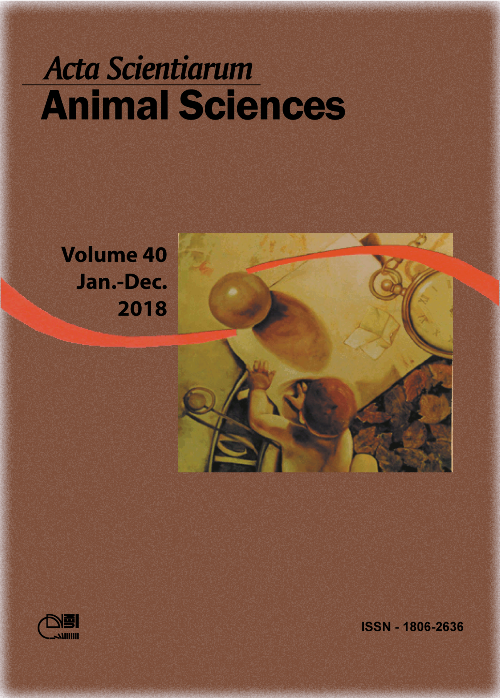<b>Partial replacement of artificial diets by wet bioflocs biomass in Nile tilapia culture tanks
Resumo
The present work aimed to assess the partial replacement of artificial diets by wet bioflocs biomass in the culture of Nile tilapia juveniles. Fish were fed on different combinations of commercial dry diets (CD) and wet bioflocs biomass (BF), as it follows: 75% CD + 25% BF, 50% CD + 50% BF, and 25% CD + 75% BF, dry matter basis. There were also positive control tanks in which the fish received only commercial diet (100% CD), and three negative control tanks where the reductions of dry diets were not compensated by wet bioflocs biomass (75% CD, 50% CD, and 25% CD). Bioflocs were produced in one 500-L outdoor tank, which did not belong to the culture system, and it was called “separate BFT tank”, in which there was a daily adjustment of the C: N ratio of water to 15: 1, by the application of dry molasses to the water. There were no significant differences between the treatments for water pH, O2, TAN and NH3. Except by 25% CD, nitrite concentrations in water were lower in bioflocs tanks than in the artificial diet tanks. The final body weight of fish was significantly higher in tanks that received only dry diets (21.9 ± 6.4 g) than in tanks with a combination of 50% dry diet and 50% wet bioflocs biomass (10.4 ± 2.5 g; p < 0.05). It can be concluded that the impairment on the growth performance of tilapia submitted to feeding restriction is lessened if wet bioflocs biomass is provided to the animals. Besides, the total substitution of artificial diets for wet bioflocs biomass in clear-water tanks is unfeasible because it leads to higher rates of mortality of tilapia in a relatively short period.
Downloads
DECLARAÇÃO DE ORIGINALIDADE E DIREITOS AUTORAIS
Declaro que o presente artigo é original, não tendo sido submetido à publicação em qualquer outro periódico nacional ou internacional, quer seja em parte ou em sua totalidade.
Os direitos autorais pertencem exclusivamente aos autores. Os direitos de licenciamento utilizados pelo periódico é a licença Creative Commons Attribution 4.0 (CC BY 4.0): são permitidos o compartilhamento (cópia e distribuição do material em qualqer meio ou formato) e adaptação (remix, transformação e criação de material a partir do conteúdo assim licenciado para quaisquer fins, inclusive comerciais.
Recomenda-se a leitura desse link para maiores informações sobre o tema: fornecimento de créditos e referências de forma correta, entre outros detalhes cruciais para uso adequado do material licenciado.








































